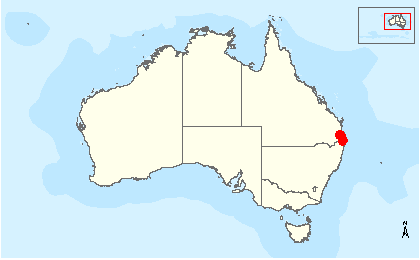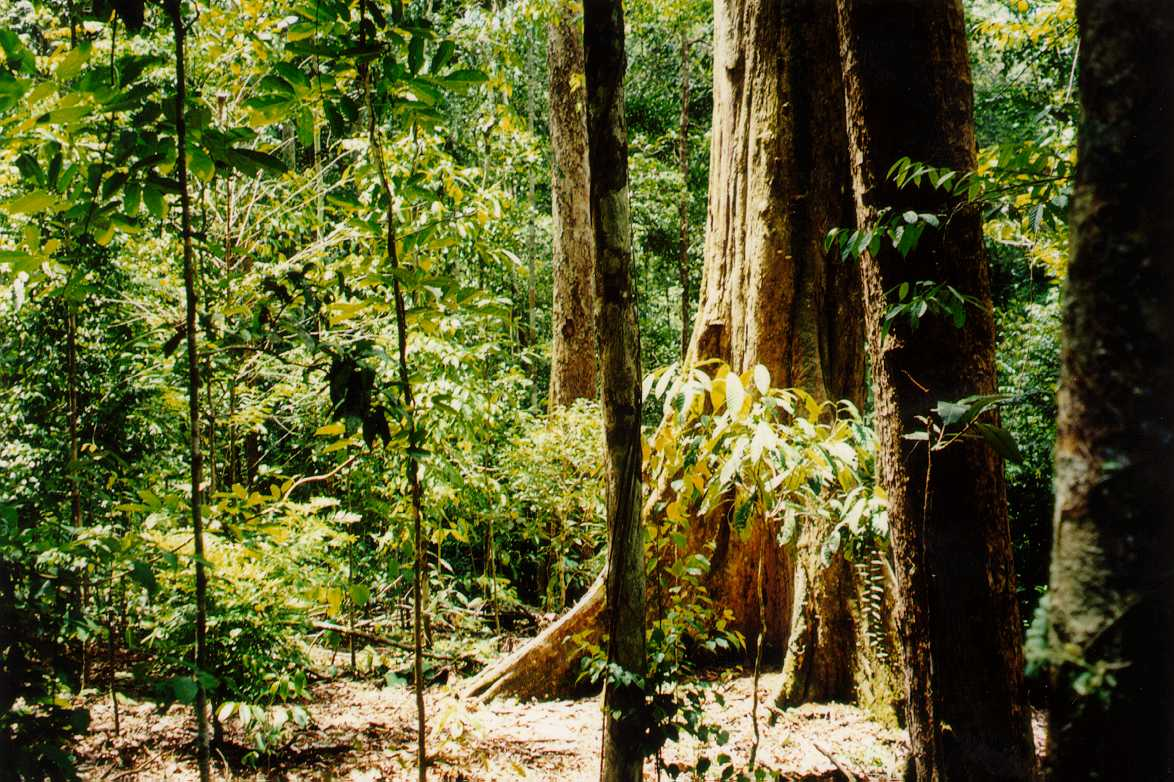Habitat: Where it lives
Location:
The Macadamia tetraphylla generally
grows in dry rainforests, typically of the eastern
coastal scrub. This means that it thrives in a
habitat similar to the north-eastern coast of
Australia. In fact, that is where the majority
of Macadamia are found growing in the wild.
They can, however, be grown in other areas of the
world- mostly for commercial use- like the islands
of
Hawaii, and more recently
South Africa, Zimbabwe, Malawi, and areas in
Central and South America.

Conditions:
This plant needs a variety of different conditions
to prosper in the wild. These include:
-rich, well-drained soil
-full sunlight
-roughly 50 inches of rain annually (although it can
withstand moderate periods of drought)
-minimum temperature of 0°C (requires
frost-free protection)
-general altitudinal range of 100-800 meters (330-2,650 feet)
-soil pH level ranging from 5.5-6.5 (What is pH? Find
out, click
here.)
Cultivation:
The cultivation of Macadamia tetraphylla began
primarily for commercial use. They are
generally grown in Hawaii and other parts of
Australia when it is not a wild population.
Cultivating new populations of Macadamia tetraphylla
outside of its natural habitat has its perks.
For example, the plant tends to adapt well to slight
variations in its growing environment. Similar
to wild plants, cultivated plants grow best in a
rich soil. For best results, the early stages
require copious amounts of watering during the
summer months. The mature tree should be in a
sheltered position because they are easily
wind-damaged. Some populations of cultivated
plants can withstand a slight frost (compared to the
wild growing Macadamia which could not).
They can also grow in slightly lower temperatures
compared to their indigenous counterparts; however,
their growth rapidly slows under 10°C.
In addition, they tend to falter at temperatures
over 30°C
There are many other types of plants that we cultivate for
commercial use. For example,
The Queen of the Namib,
Vanilla, and
The Madagascar Periwinkle. Some of these
have important medicinal uses, others for personal
use, and some for food- just like
Macadamia!
Want More?
Want to learn about other Australian plants? How about
the
Australian Christmas Tree? Or maybe
Peppermint? Mmm sounds good, why not check it out?!
Plants not your thing? Well good thing there are tons of
interesting animals in Australia as well! Ever hear of the
Sydney Funnel-Web Spider? If not, I'd recommend checking
that organism out, it's crazy! Possibly the
Reef Squid? If you want to search organisms for
yourself, just go to
http://bioweb.uwlax.edu/bio203/ and check out all the
organisms that past and current students have searched!
Continue on to
Adaptations!